
Good Food contributing editor Diana Henry is an award-winning food writer. Her latest book is How to Eat a Peach (Mitchell Beazley). For more of Diana's recipes, go to bbcgoodfoodme.com. @dianahenryfood
Until 1982, I didn't know about tahini's existence. I'd just moved to London from Northern Ireland, and a Turkish shop near me - it sold everything from pails of black olives to washing-up liquid - had jars of it. I looked at it quizzically, bought it and, later when I tried it, couldn't understand how this sludge-colored liquid could ever taste good. It had a bitter undertow, but I loved its silkiness and weight; it has the thickness and texture of double cream. Now, I often have two jars on the go (because one always gets lost in the depths of my larder).
I started to use tahini more after I bought Claudia Roden's A Book of Middle Eastern Food (Penguin) and learnt that when it's mixed with water, lemon juice and garlic, it makes an instant sauce for fish, lamb kebabs, roast summer veg or poached winter produce. And this simple sauce serves as a base for many others - you can whizz parsley or coriander into it, add yogurt, extra virgin olive oil, chillies or torn mint, sweeten it with honey or purée it with aubergine flesh. I love to spoon it over a warm salad of roast aubergines and chopped dates (its slight bitterness is delicious with dates). Of course, it's an essential ingredient in hummus too, which is probably how we eat it most.
Denne historien er fra April 2022-utgaven av BBC Good Food ME.
Start din 7-dagers gratis prøveperiode på Magzter GOLD for å få tilgang til tusenvis av utvalgte premiumhistorier og 9000+ magasiner og aviser.
Allerede abonnent ? Logg på
Denne historien er fra April 2022-utgaven av BBC Good Food ME.
Start din 7-dagers gratis prøveperiode på Magzter GOLD for å få tilgang til tusenvis av utvalgte premiumhistorier og 9000+ magasiner og aviser.
Allerede abonnent? Logg på
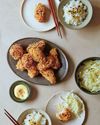
Kung Pao & Beyond by Susan Jung
Editor Keith Kendrick indulges his love of fried chicken with this celebration of the whole bird
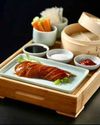
Tried & tasted
Our top dining experiences this month
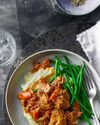
Make the most of your gadgets
Embrace energy-efficient cooking with these money-saving

CHOCOLATE PIZZA
Make this a fun baking project with the kids

5 healthy ideas yogurt
Boost your gut health with our simple snacks, breakfasts and lunches

a touch of spice
Make a change from rice with quick-cooking bulgur wheat and chickpeas – the result is a gently spiced vegetarian supper, full of flavour and textures

THE SUITE LIFE
Pack your bags and head to Qatar for a luxurious weekend escapade at Waldorf Astoria Lusail Doha
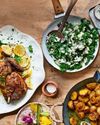
MELISSA THOMPSON'S FIRE FEAST
Welcome warmer days with this fresh menu for the barbecue

PULLED BEEF
Tom's one-pan beef recipe is a simple way to master slow-cooking meat
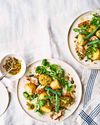
free-from & fabulous
Quick, everyday recipes that omit dairy, eggs and nuts